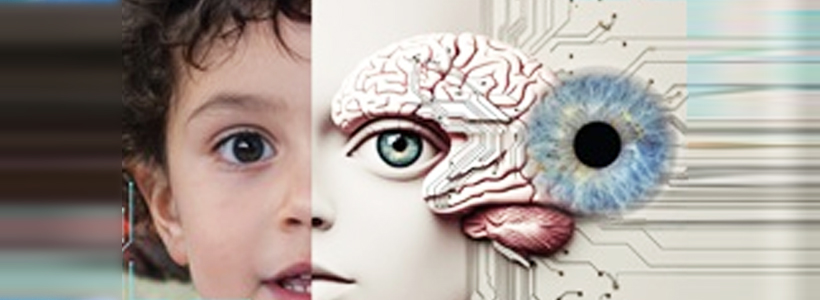
21 Oct 2025 | 9:50 AM
What happens when machines can think, feel, and decide better than us? Do we lose what makes us human—or discover what truly does?
As artificial intelligence grows ever more powerful, the final frontier is not in the machines we build, but in the awareness they cannot replicate.
Neuroscience and Artificial Intelligence (AI), distinct fields rooted in biology and computation, converge on a shared and complex challenge: understanding the nature of consciousness and the identity of the self. As both disciplines push the frontiers of human knowledge, they encounter a profound paradox. Though capable of analyzing nearly every external phenomenon, they struggle to fully observe or explain the one element central to all observation: the subjective “I.” Much like a camera that can capture everything except its own lens, the tools of neuroscience and AI falter when turned inward. This limitation defines the challenge of introspection: the subject’s inherent inability to observe itself as an object.
Yet, despite this fundamental limitation, progress in both domains has been transformative. In medicine, AI is increasingly integrated into diagnostics, clinical decision-making, and surgical planning. Tools such as RapidAI and Qure.ai in acute stroke triage deliver real-time imaging analytics that accelerate evidence-based intervention, significantly improving outcomes. In neurosurgery, technologies like Medtronic’s Stealth Station and Mazor X robotic systems are redefining precision in complex cranial and spinal procedures. Although they lack the warmth and empathy of a human touch, these innovations exemplify AI’s emergence as a general-purpose technology reshaping clinical practice, research, and education-comparable to electricity in its transformative reach.
Meanwhile, neuroscience provides a unique and often paradoxical window into consciousness. Awake craniotomies, where patients remain conscious and offer real-time feedback during tumor resections, reveal striking dissociations: minor cortical lesions can radically alter speech and personality, while extensive resections may leave core identity and functions intact. Such observations defy reductionist models and suggest that brain function alone may not fully account for the lived experience of being. Techniques like fMRI, connectomics, and electrophysiology offer powerful maps of neural correlates of cognition, yet they stop short of explaining how subjective awareness arises.
This explanatory gap mirrors a conceptual impasse seen in physics at singularity, where existing laws of nature cease to apply. Neuroscience and AI may be approaching a similar threshold—one where reconciling objective data with first-person experience demands an entirely new paradigm. Some researchers and thinkers are increasingly looking toward alternative epistemologies, including Indian non-dual traditions like Advaita Vedanta, which propose that consciousness is not an emergent property of matter, but the fundamental field in that matter and mind arise. Though currently beyond the bounds of conventional scientific methodology, such frameworks provide logically coherent models that may help interpret the paradoxes challenging both AI and brain science.
As AI progresses from narrow intelligence to general intelligence, and ultimately toward superintelligence, it begins to outperform abilities long considered uniquely human: logical reasoning, creativity, emotional intelligence, and even moral decision-making. These capabilities, once thought to be the final frontier of human uniqueness, may soon be mirrored by increasingly autonomous machines.
This trajectory provokes a deeper inquiry: If machines can replicate all measurable aspects of human thought and behavior, what remains uniquely human? The answer may not lie in our cognitive outputs, but in our capacity for self-awareness—the ability to recognize and reflect on the fact of being. The question “Who am I?,” not as a rhetorical curiosity, but as a direct existential inquiry, remains beyond the grasp of any algorithm. AI operates within a framework of input, processing, and output. It cannot transcend this loop to truly reflect on the nature of its own subjectivity. By contrast, human consciousness can recognize that all objects of perception: thoughts, memories, emotions, even the idea of self, are transient, observable phenomena. That which observes them is not a neural computation, but the unchanging presence in which all experiences unfold. This reflexive awareness, which we may term Absolute Intelligence, is not about accumulating more information or processing it faster. It is the direct recognition of the self as the witnessing presence behind all phenomena.
It is here that the true line between human and machine is drawn. No machine can genuinely ask, “Who am I?”—not as a recursive computation, but as a radical ontological turning point. This capacity for self-inquiry may well be the essence of what it means to be human.
Visual Metaphor: The Evolution of Intelligence
The cover triptych illustrates this journey:
This visual progression invites us to rethink intelligence not merely as a computational capacity, but as a spectrum—from algorithmic problem-solving to transcendent self-realization.
A 14th-century Advaita text, Dṛg Dṛśya Viveka, captures this with crystalline simplicity:
रूपं दृश्यं लोचनं दृक् तद्दृश्यं दृक्तु मानसम् ।
दृश्या धीवृत्तयः साक्षी दृगेव न तु दृश्यते
The eye sees form; the mind sees the eye; the Witness sees the mind—yet is never itself seen.
In this chain of seers and seen, only the Witness-pure awareness—remains beyond objectification.
As neuroscience and AI evolve, each unlocking deeper layers of cognition and computation, the next revolution in intelligence may not be about building smarter machines, but about turning inward and awakening to the one who observes them all.